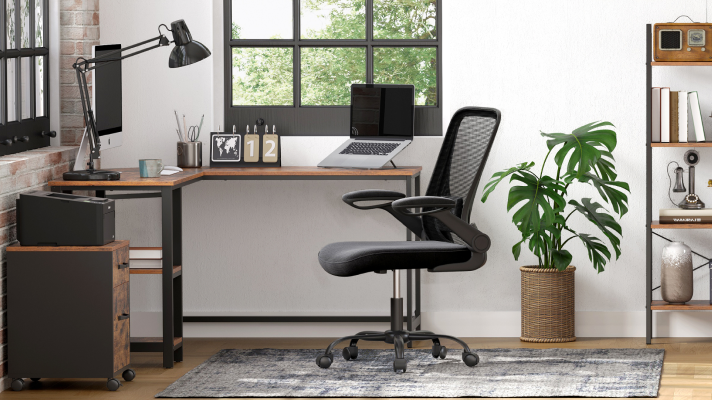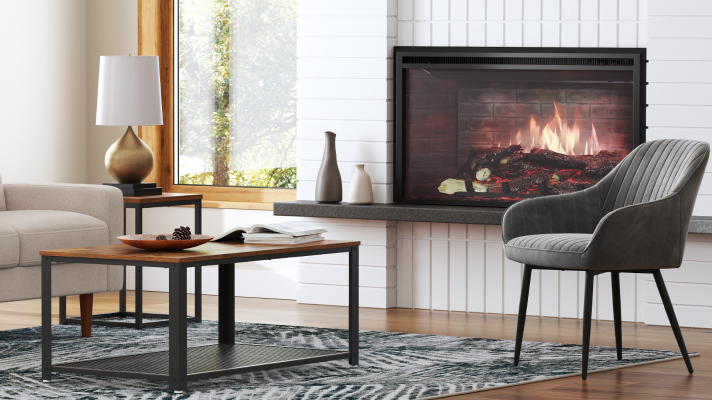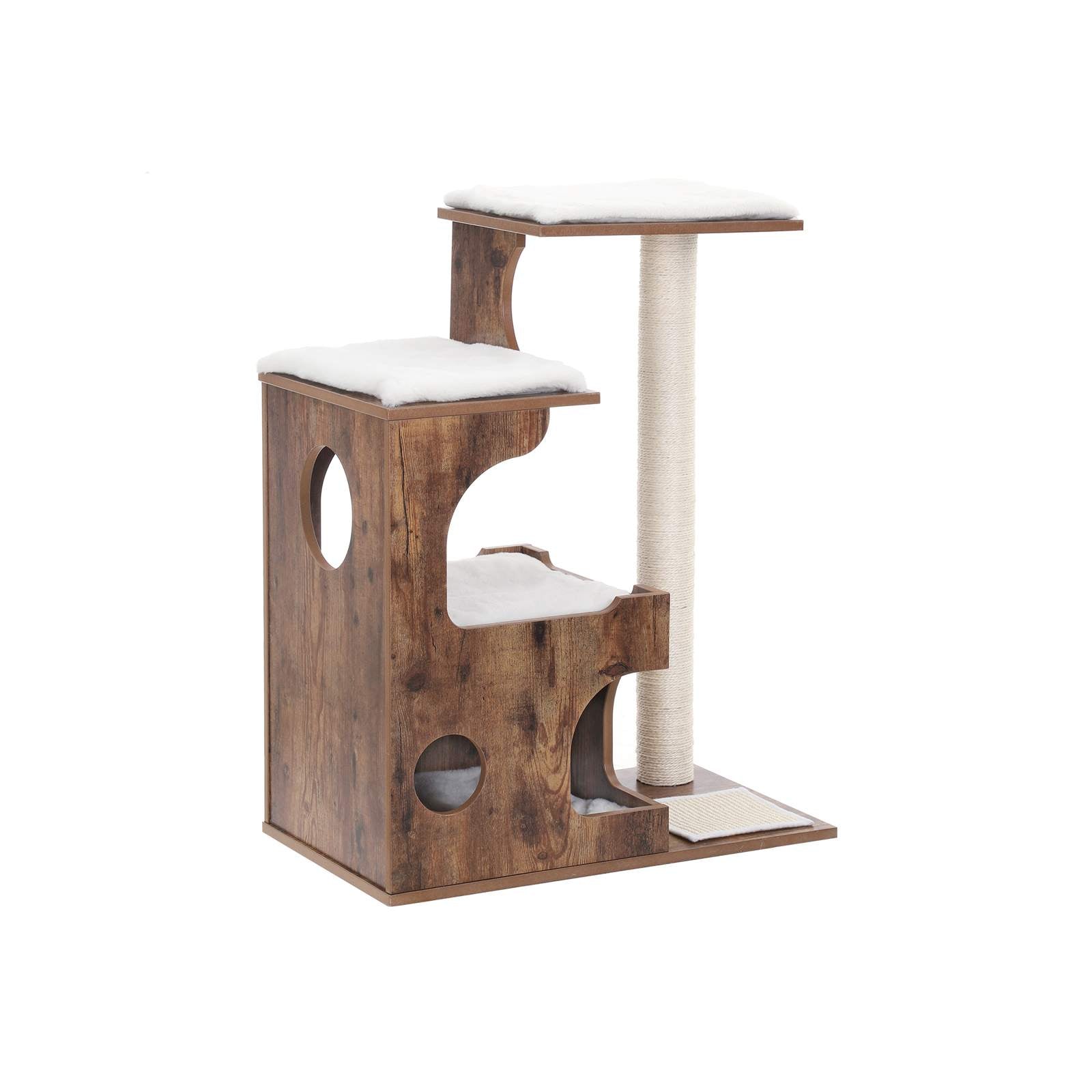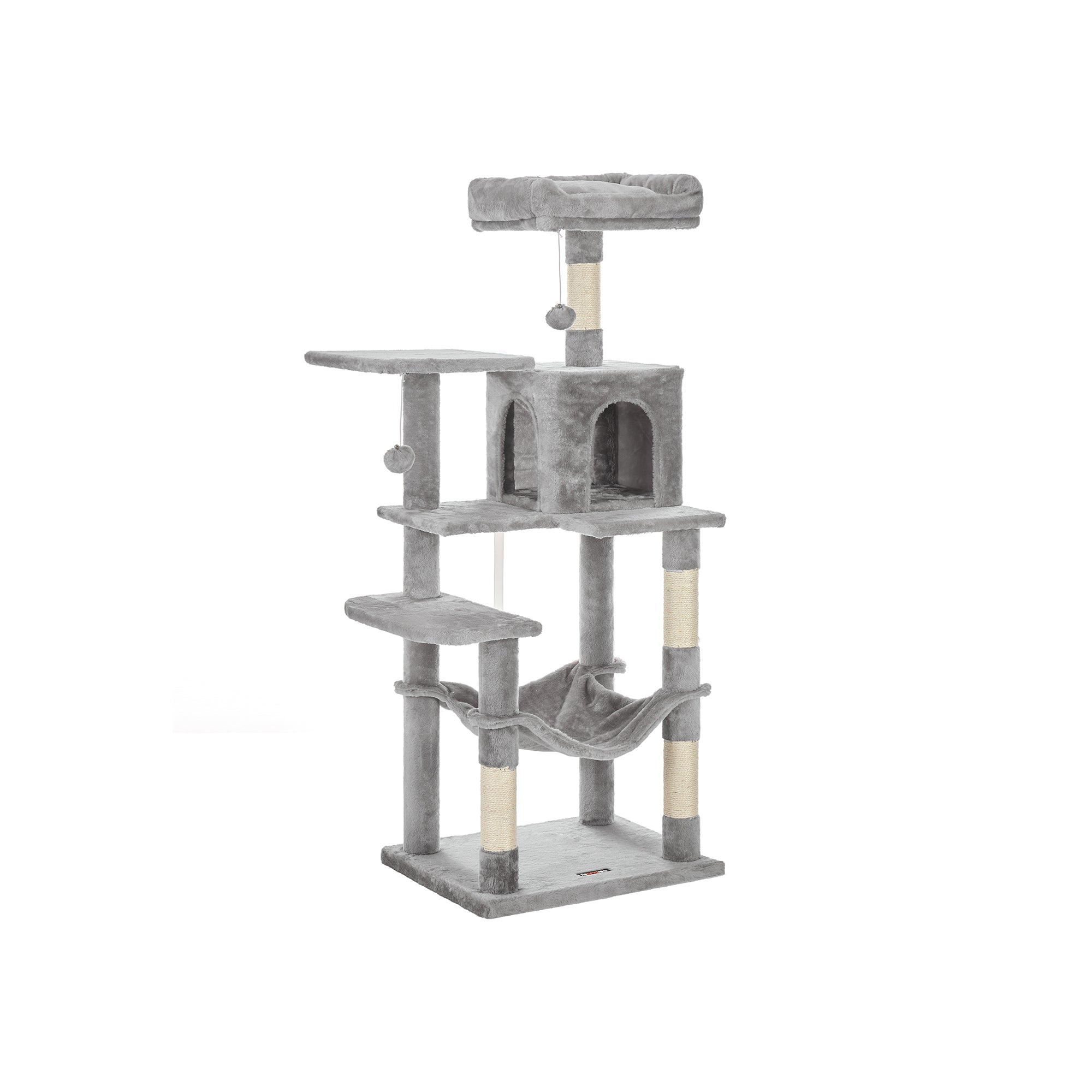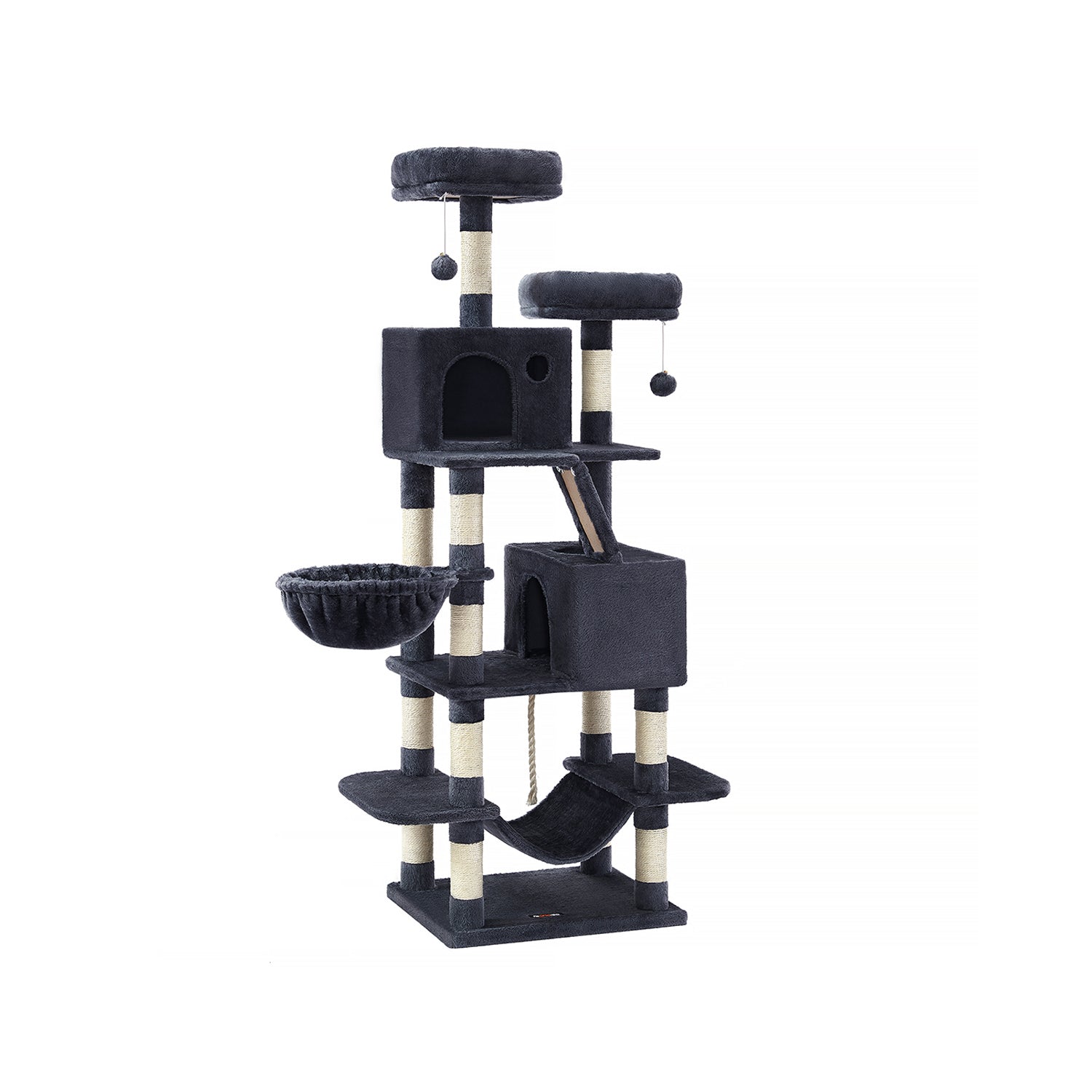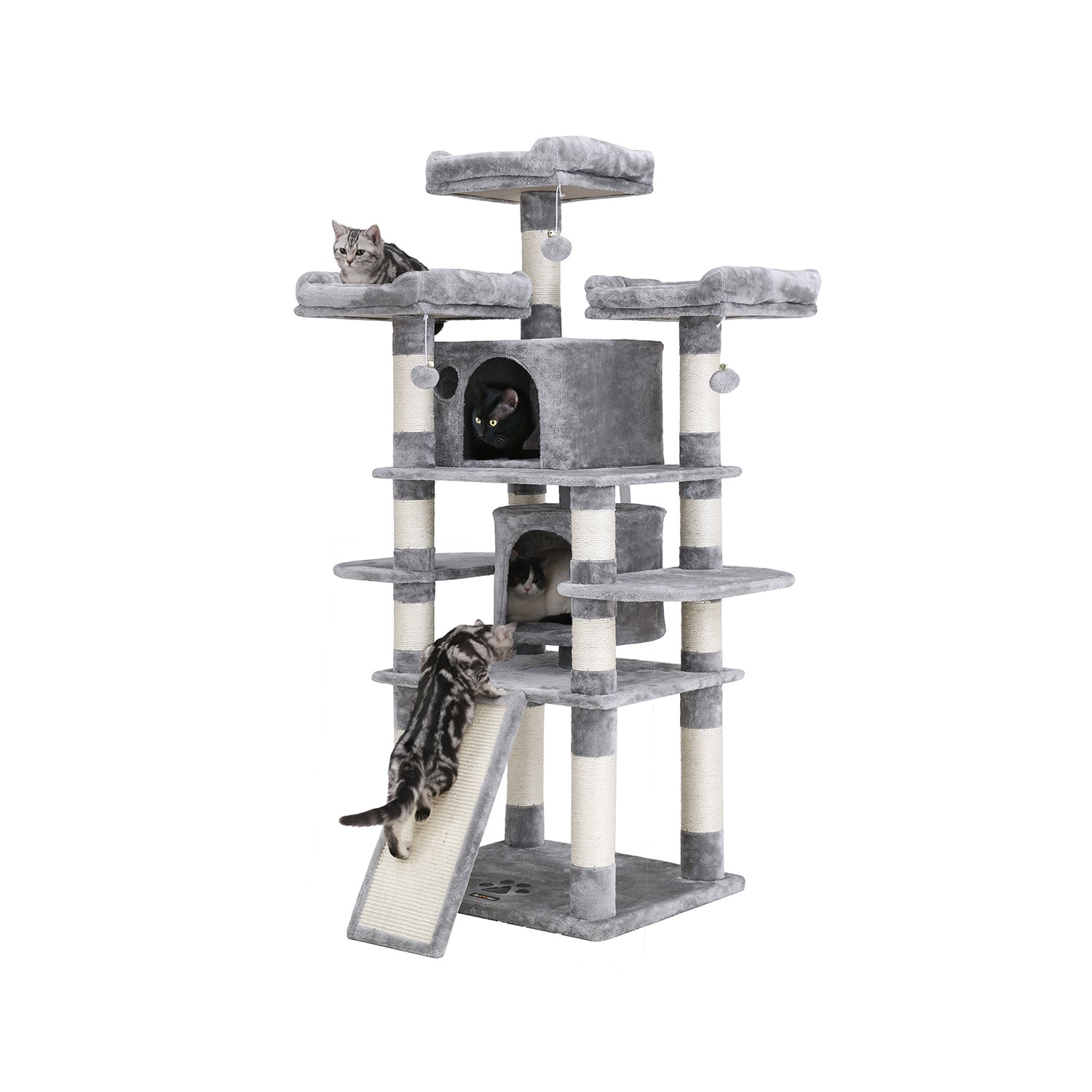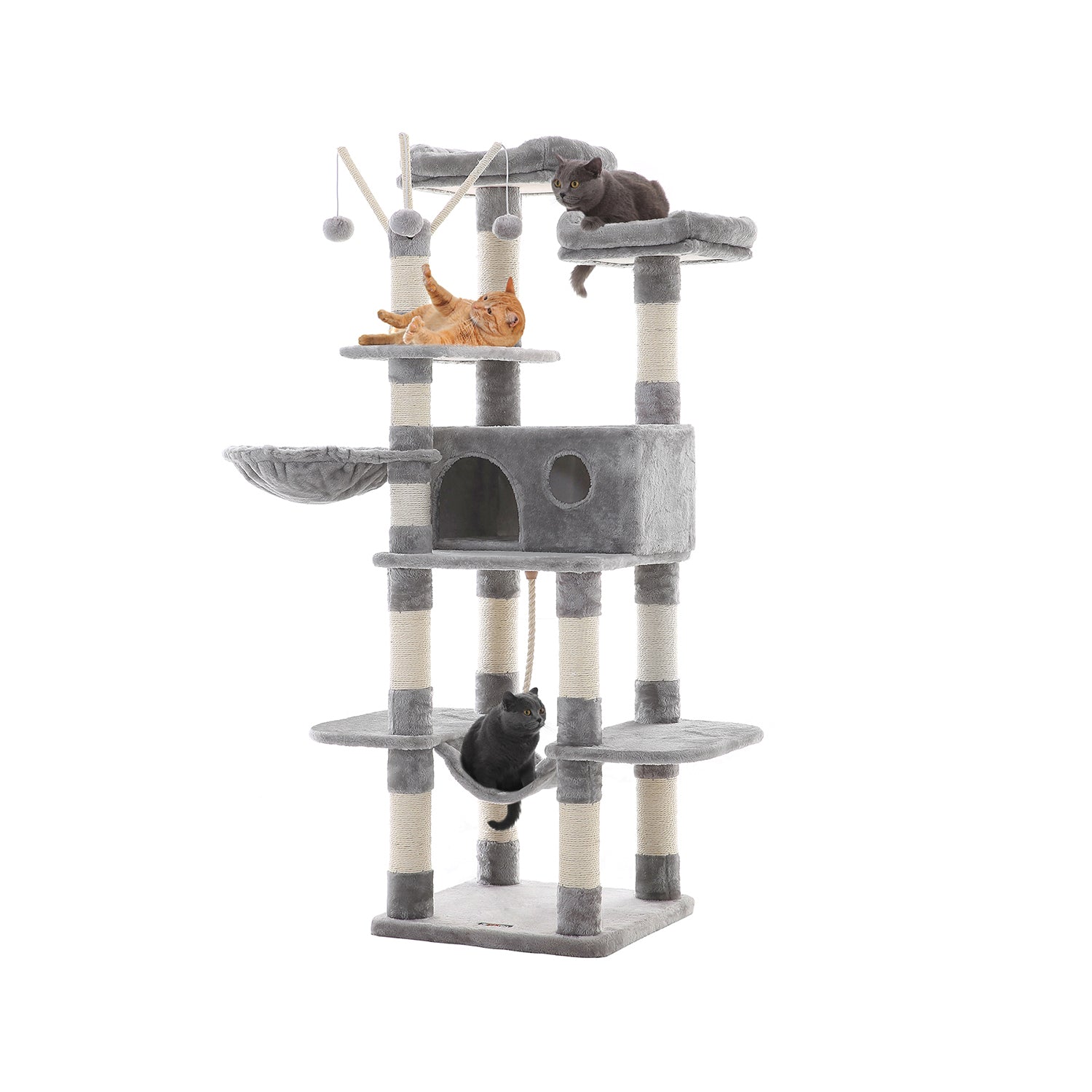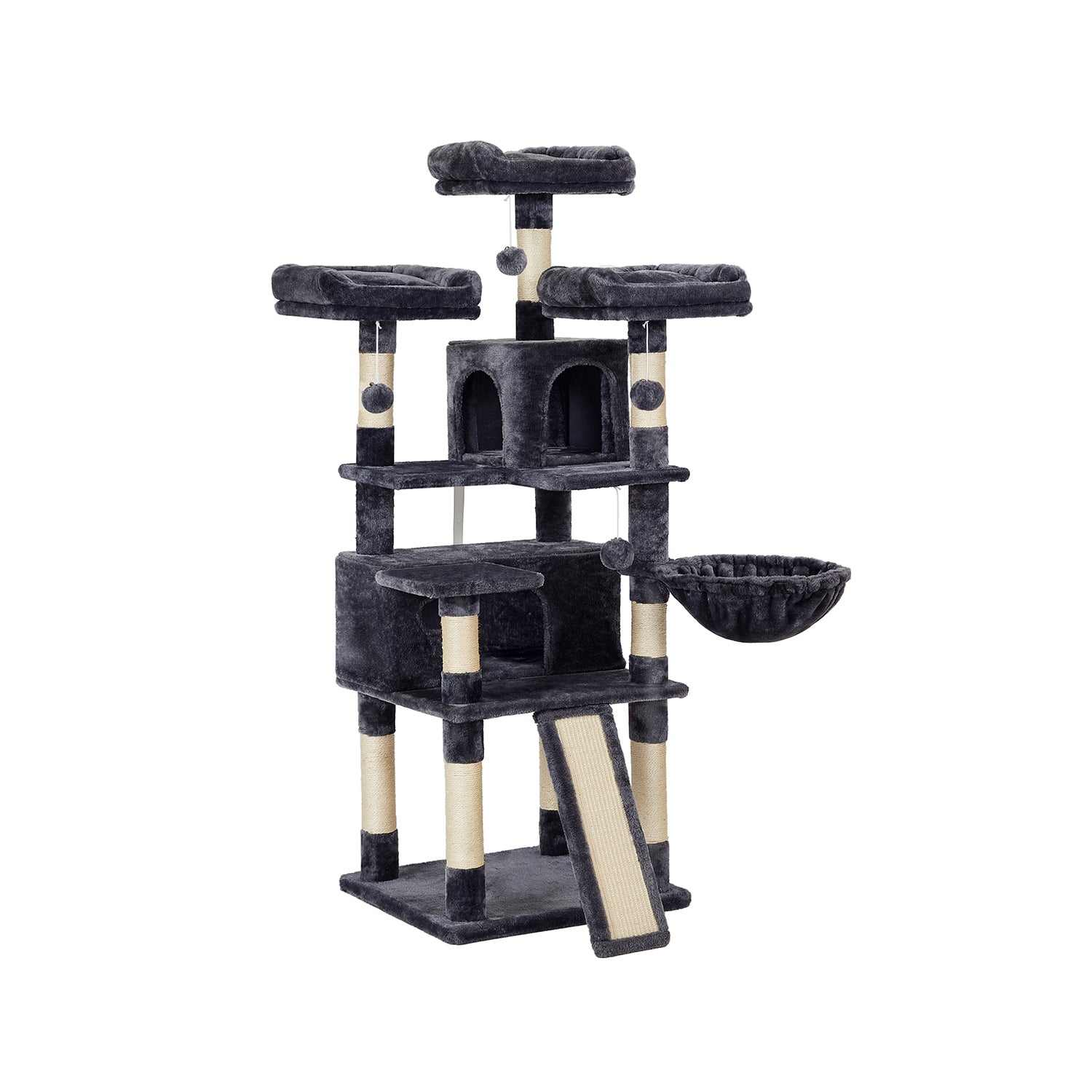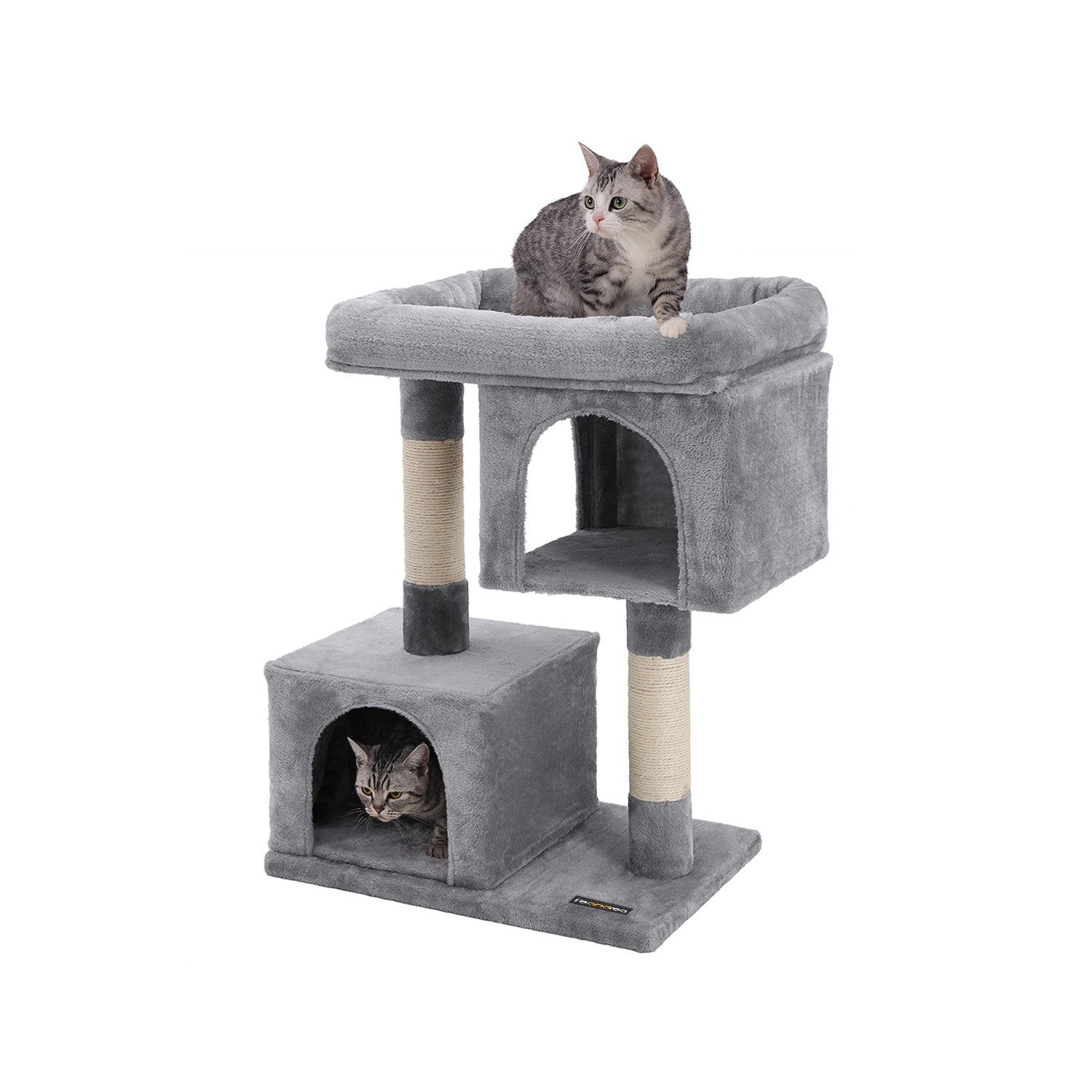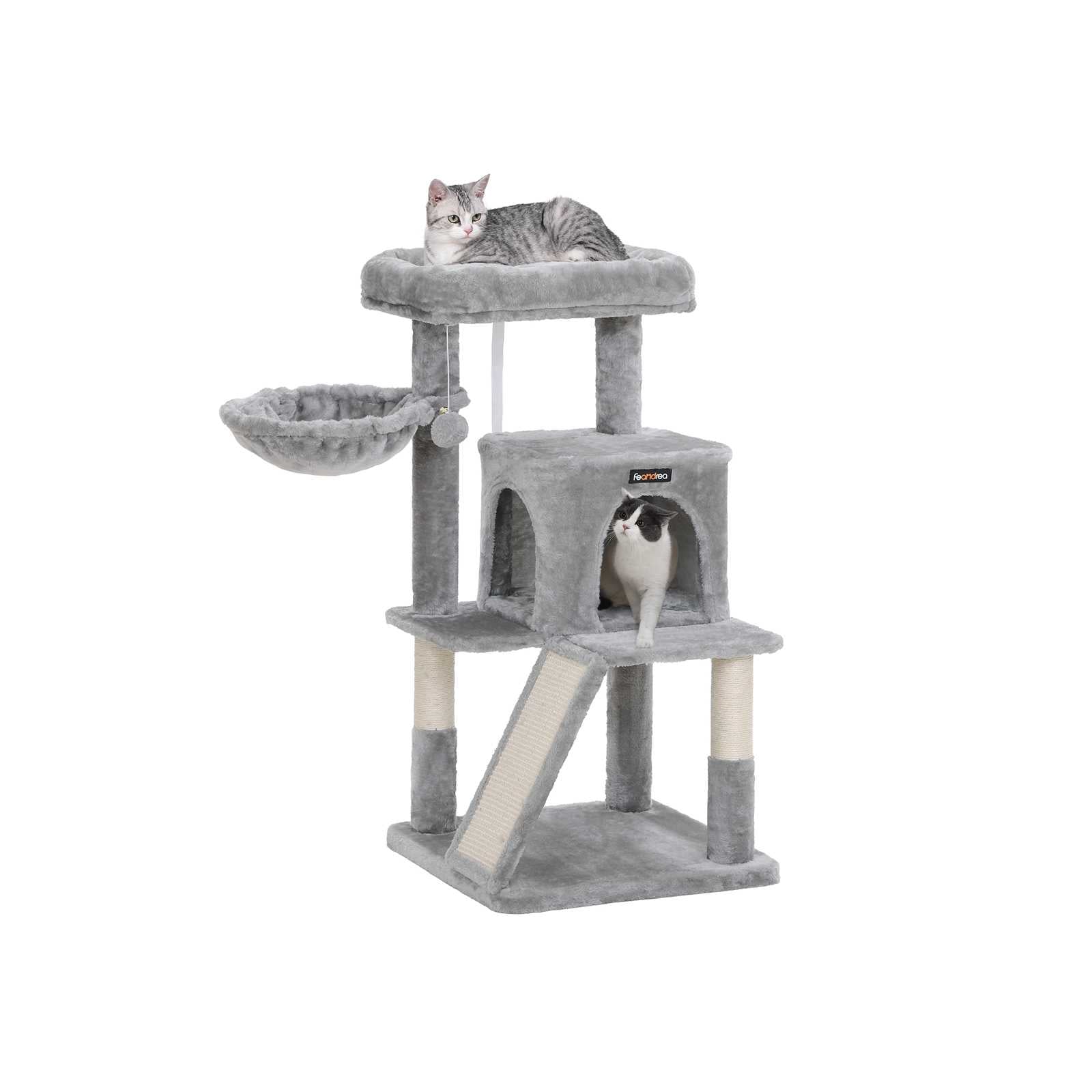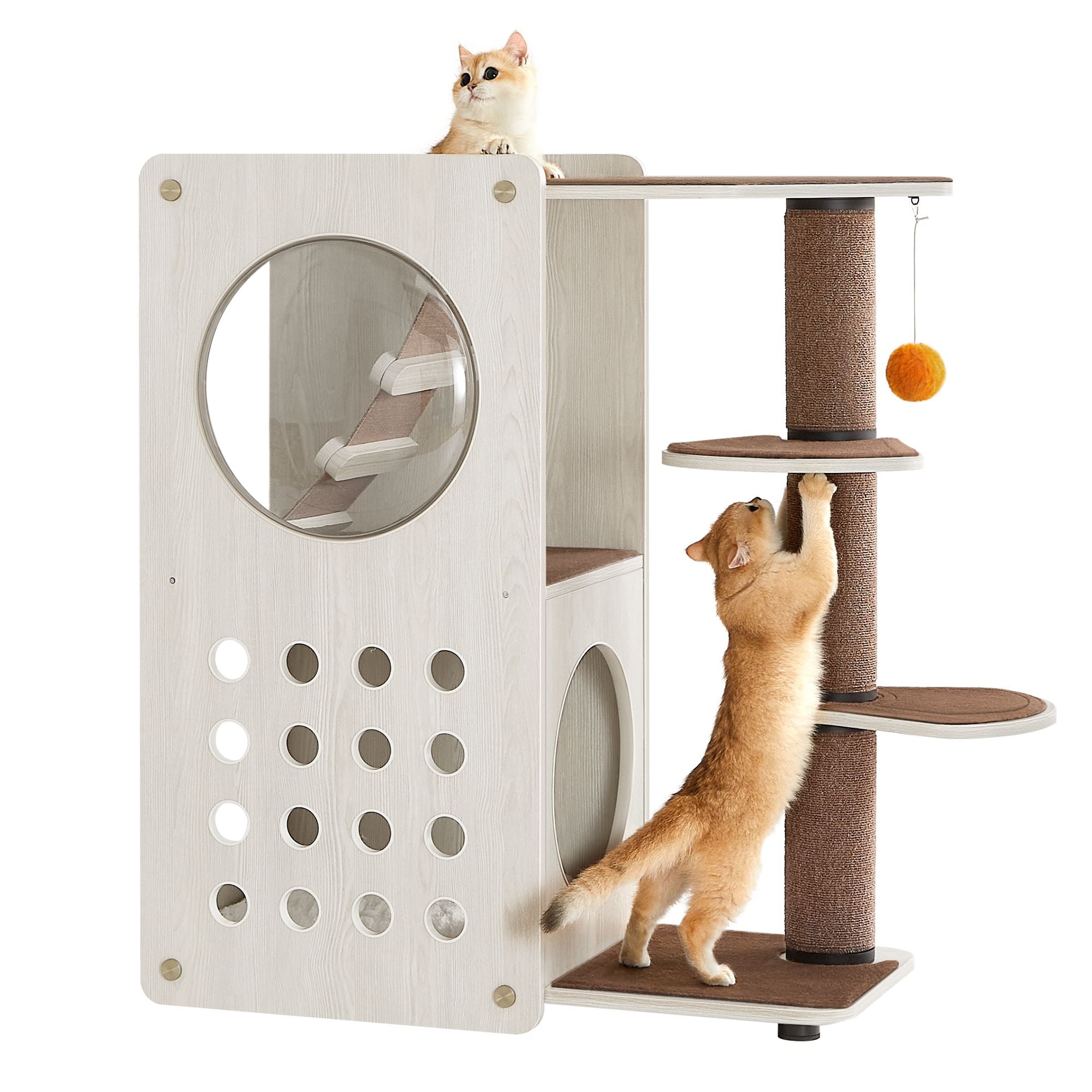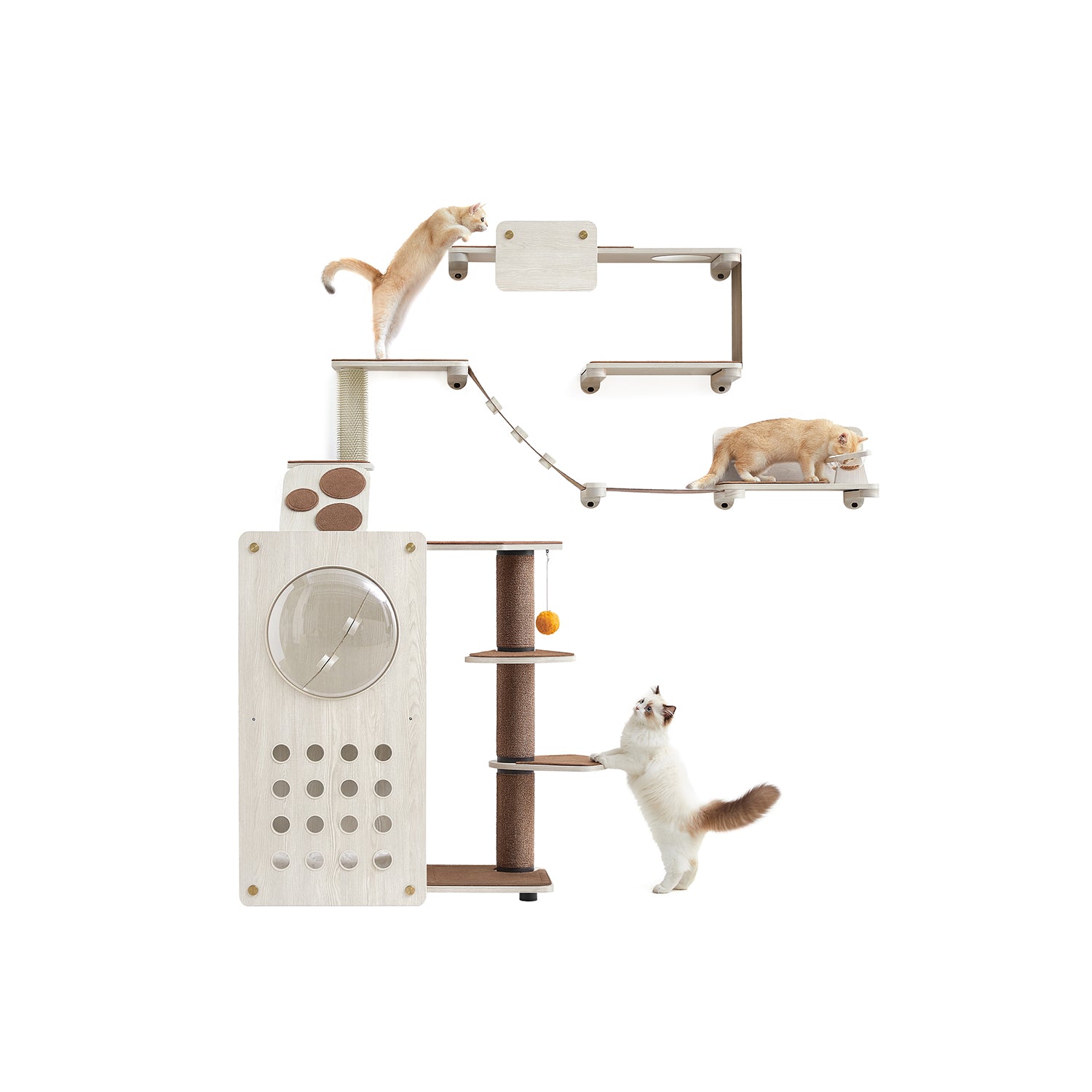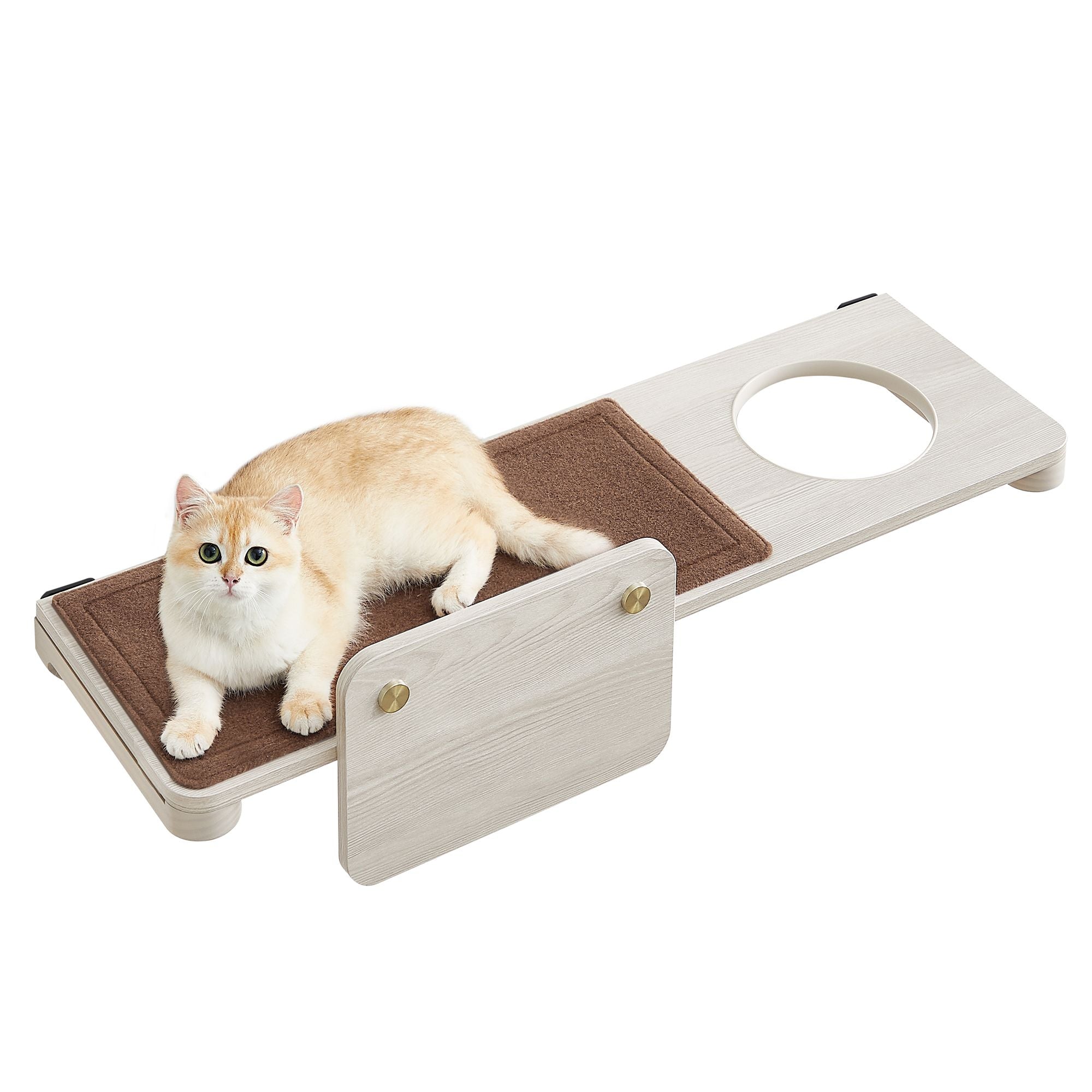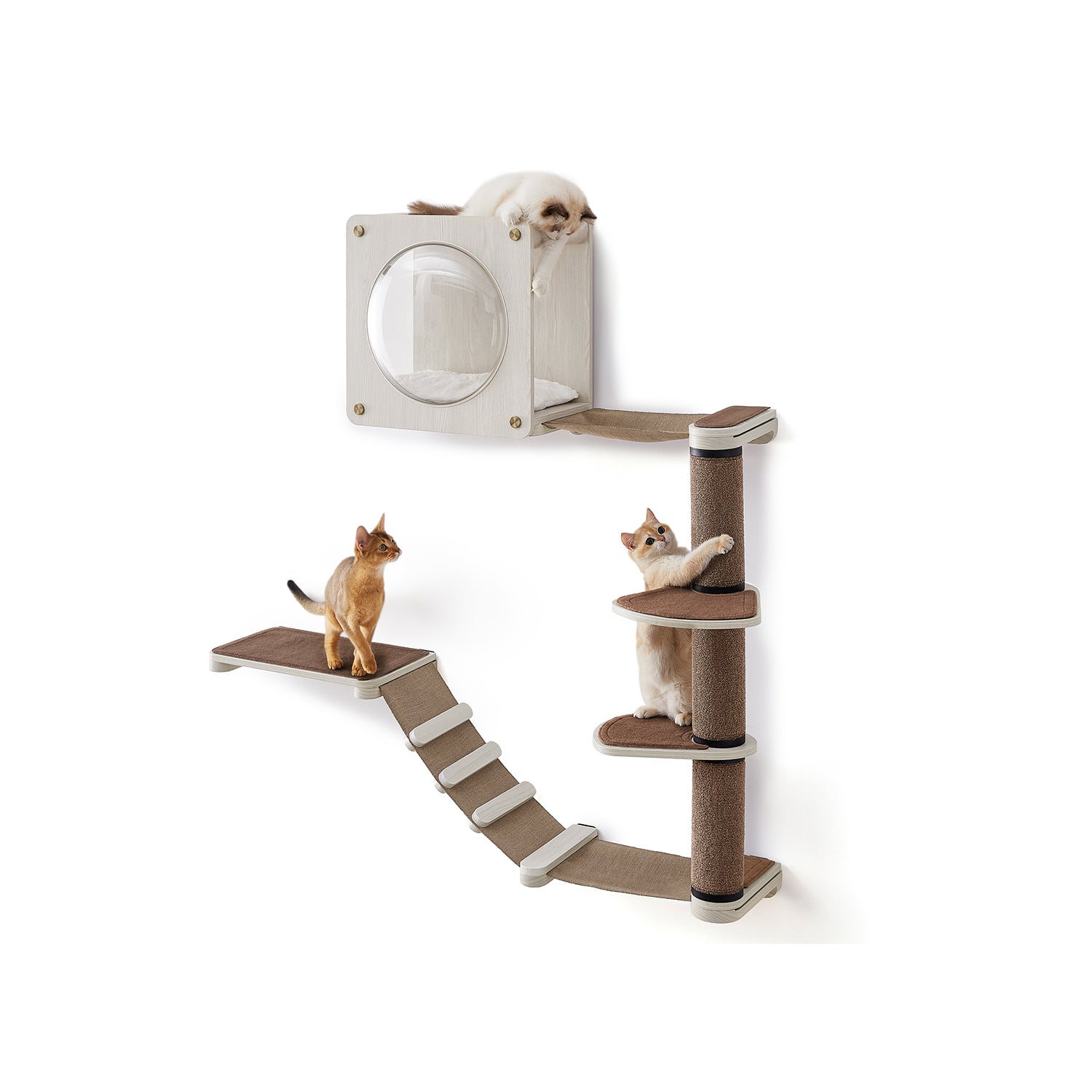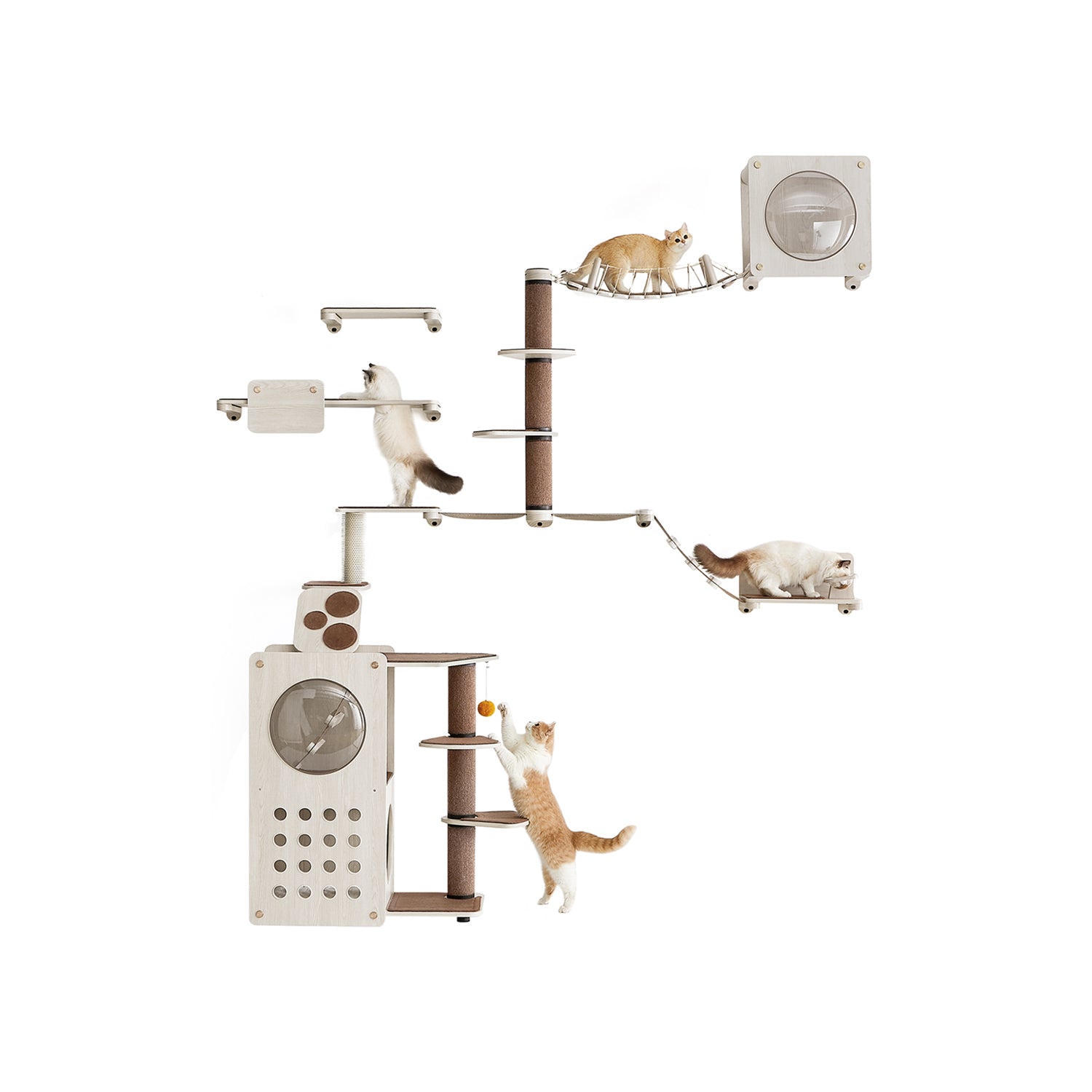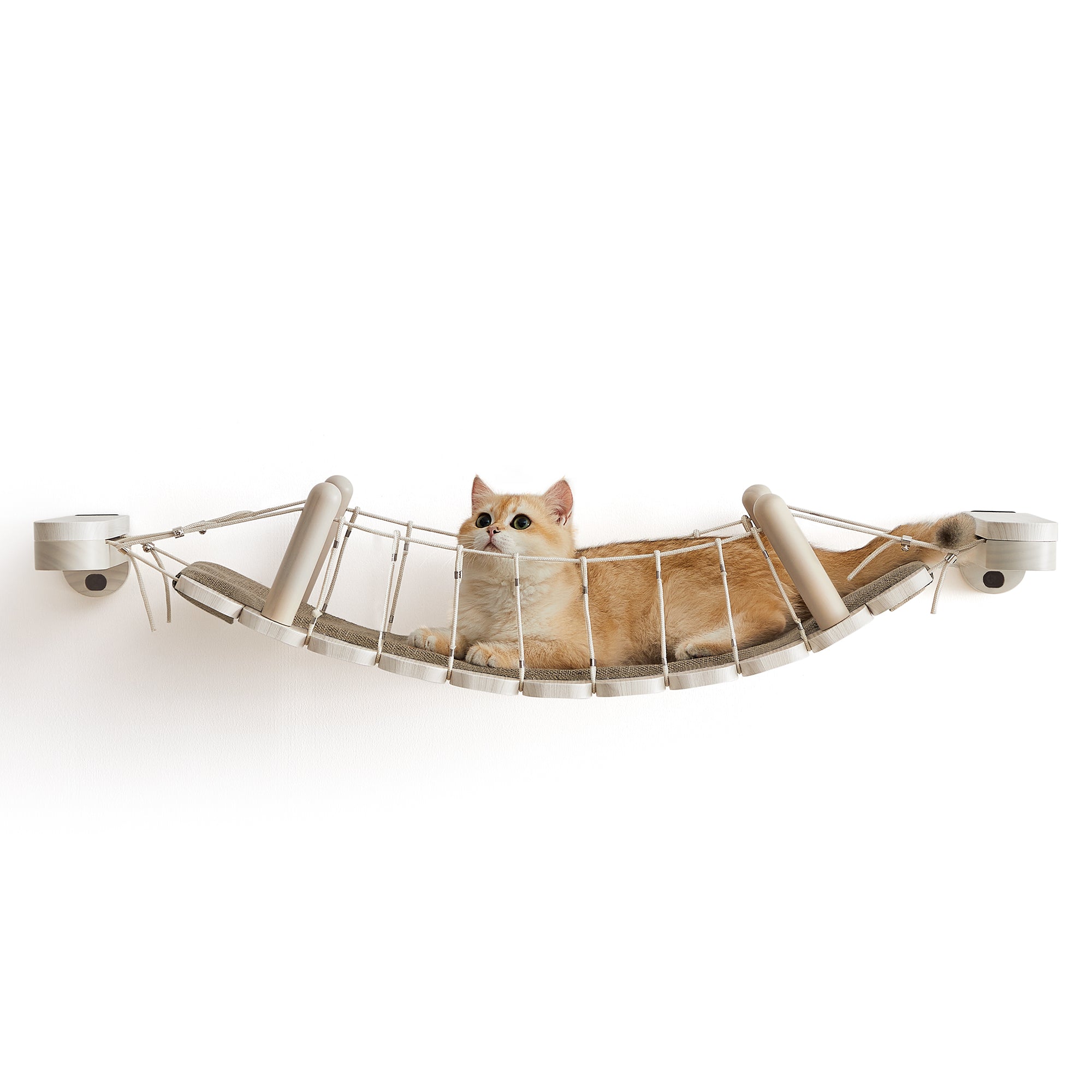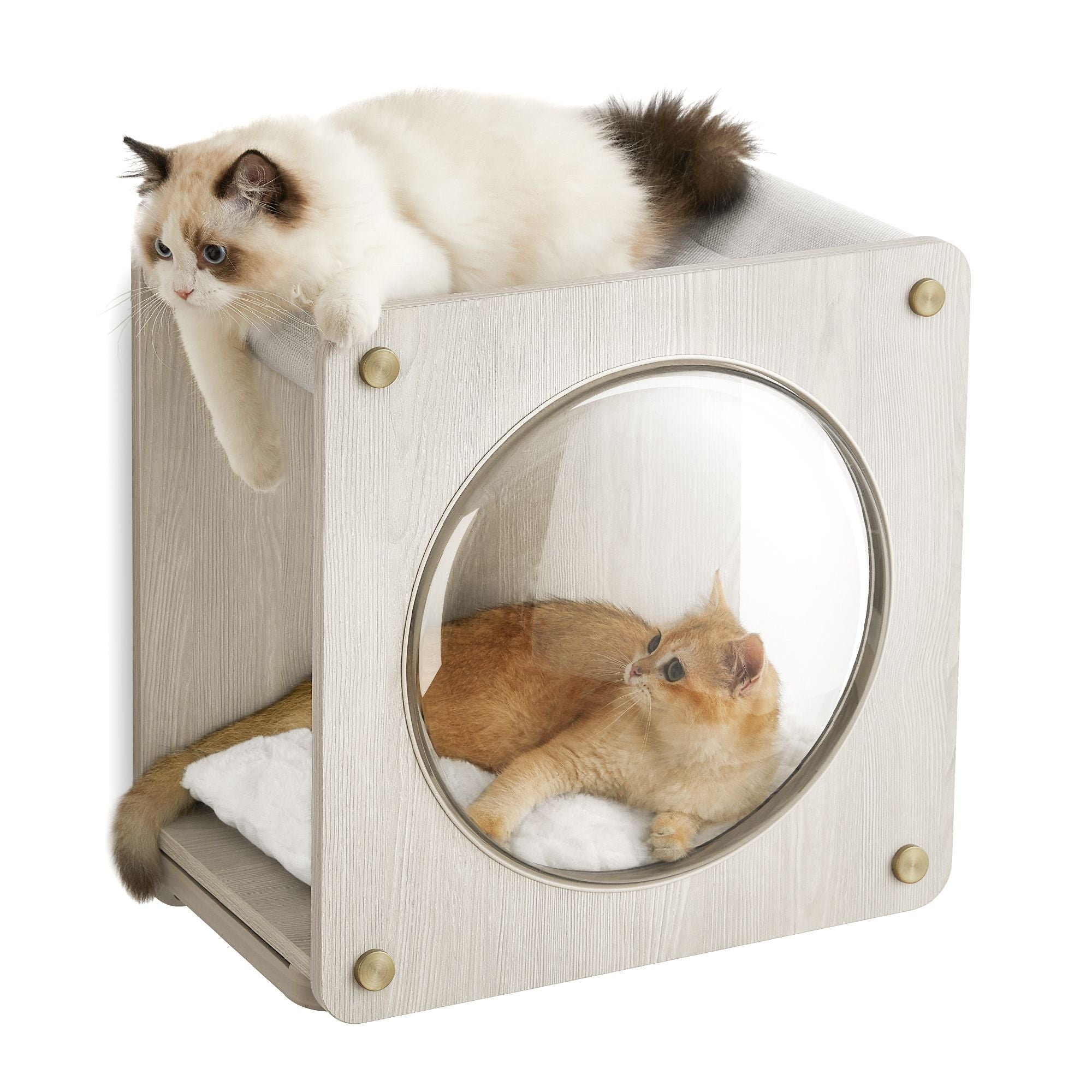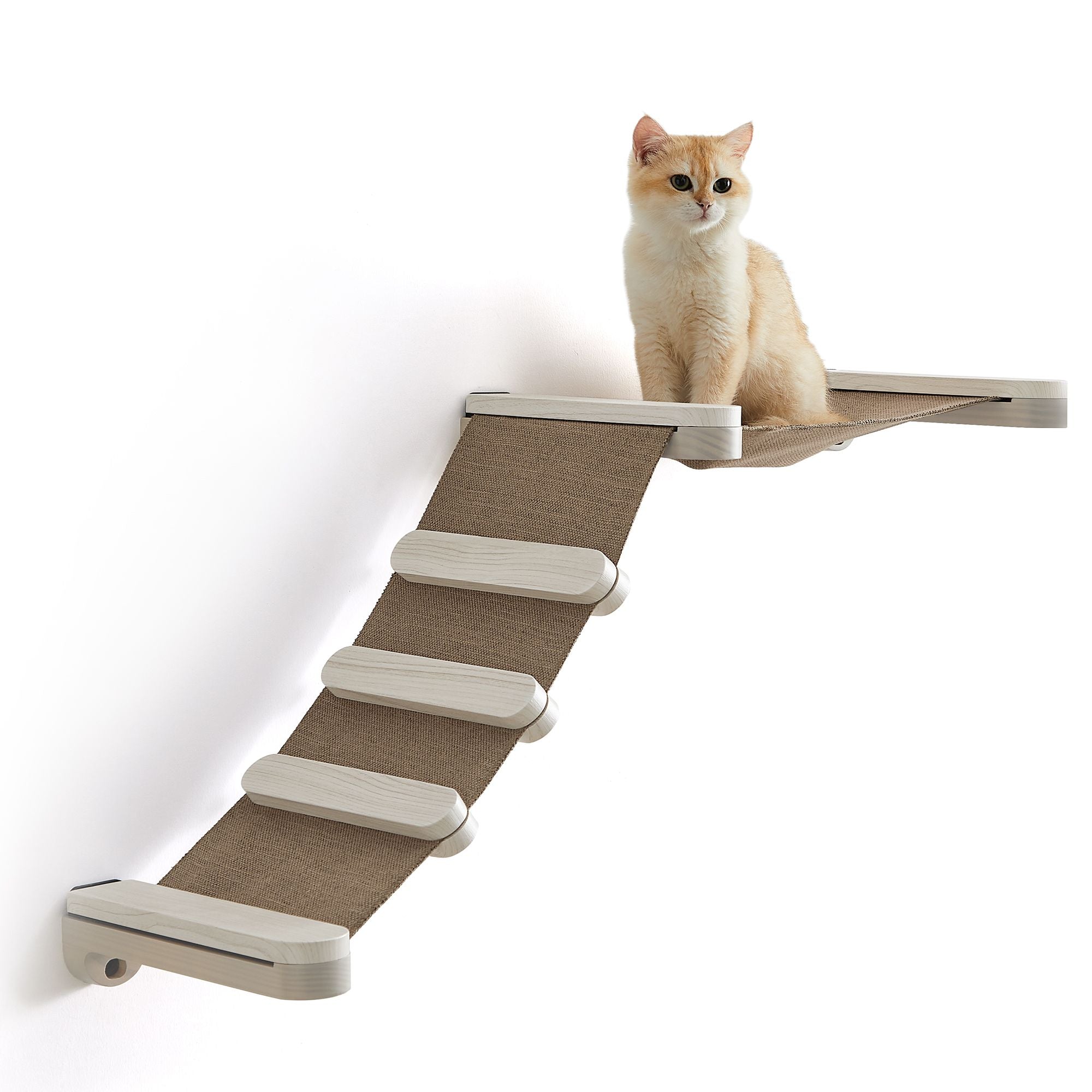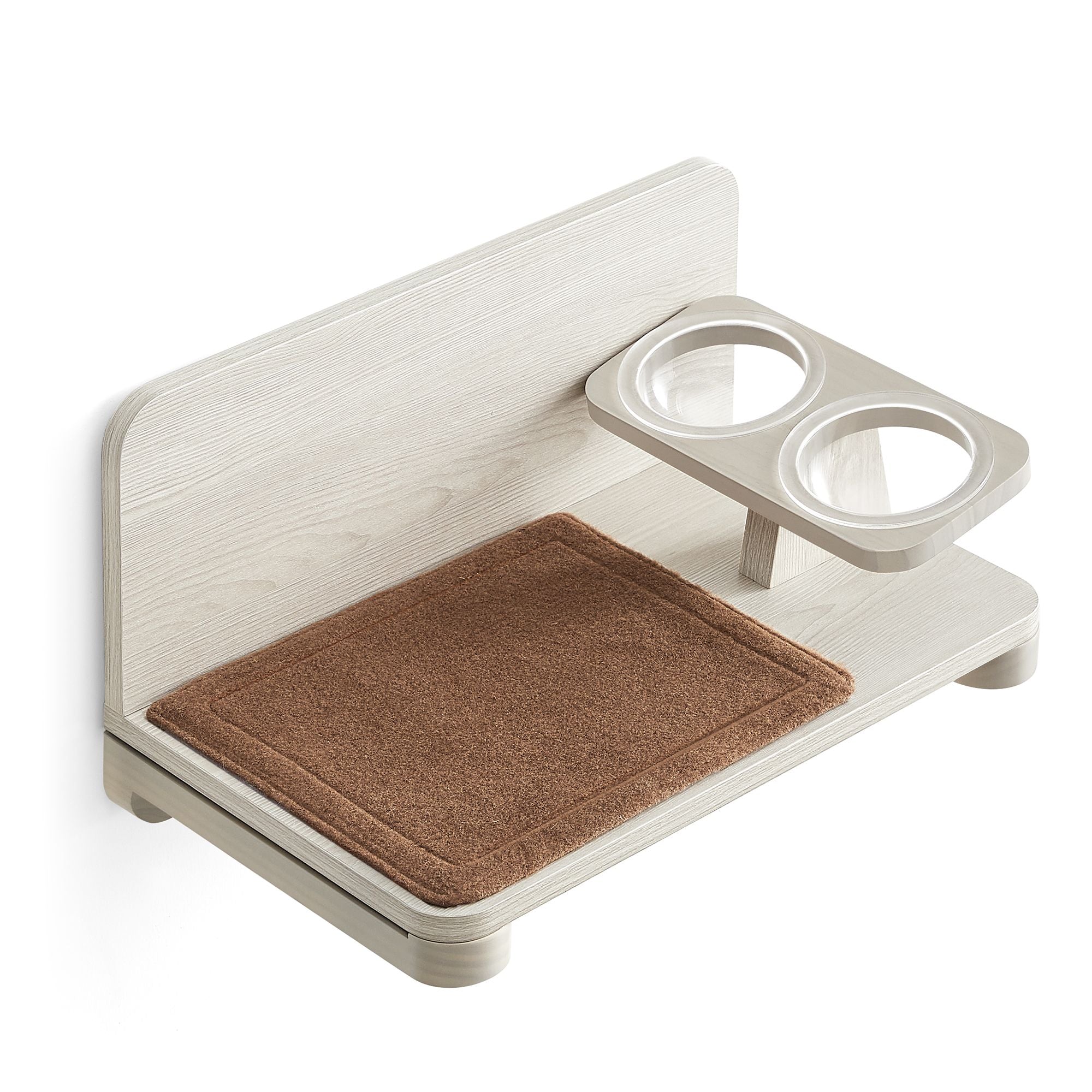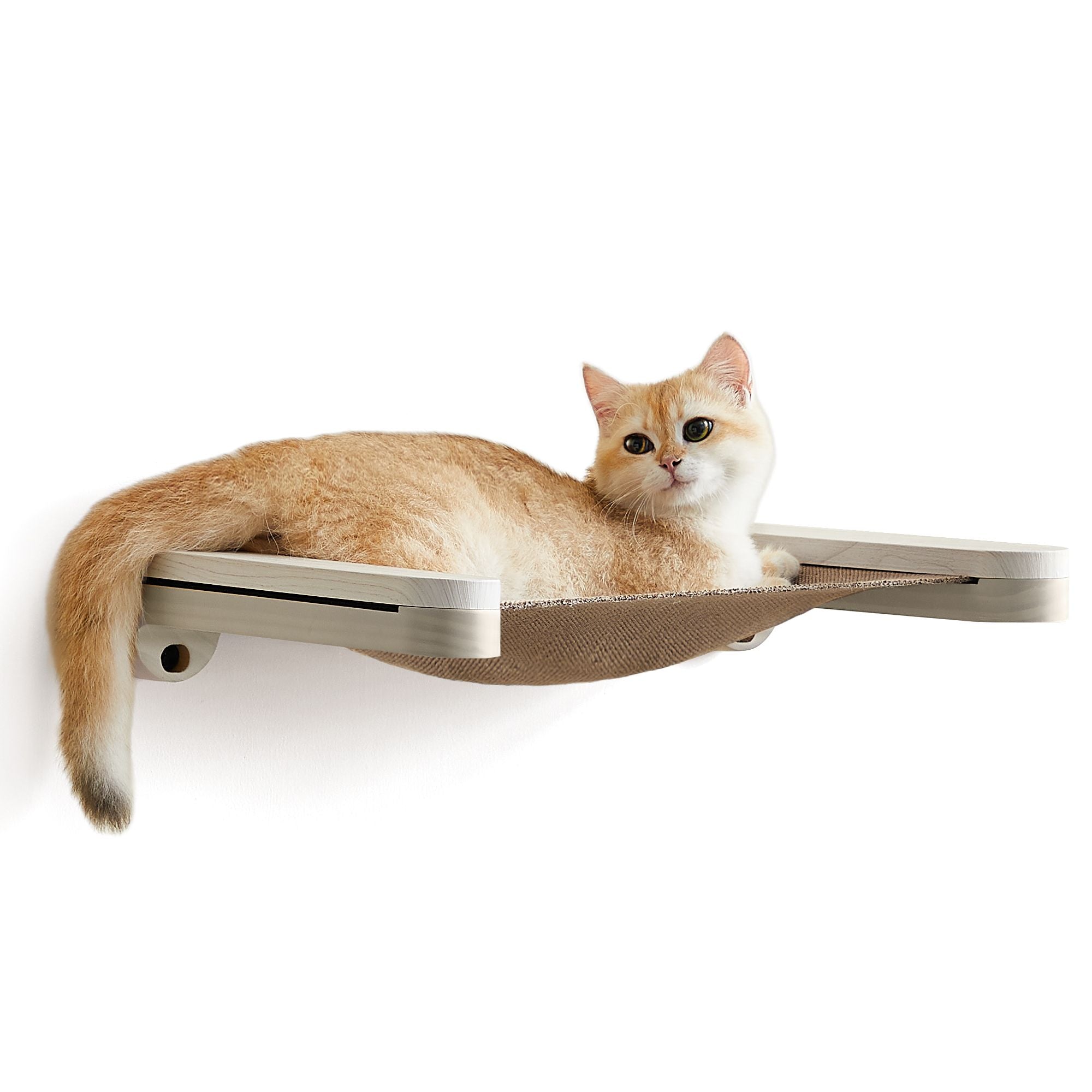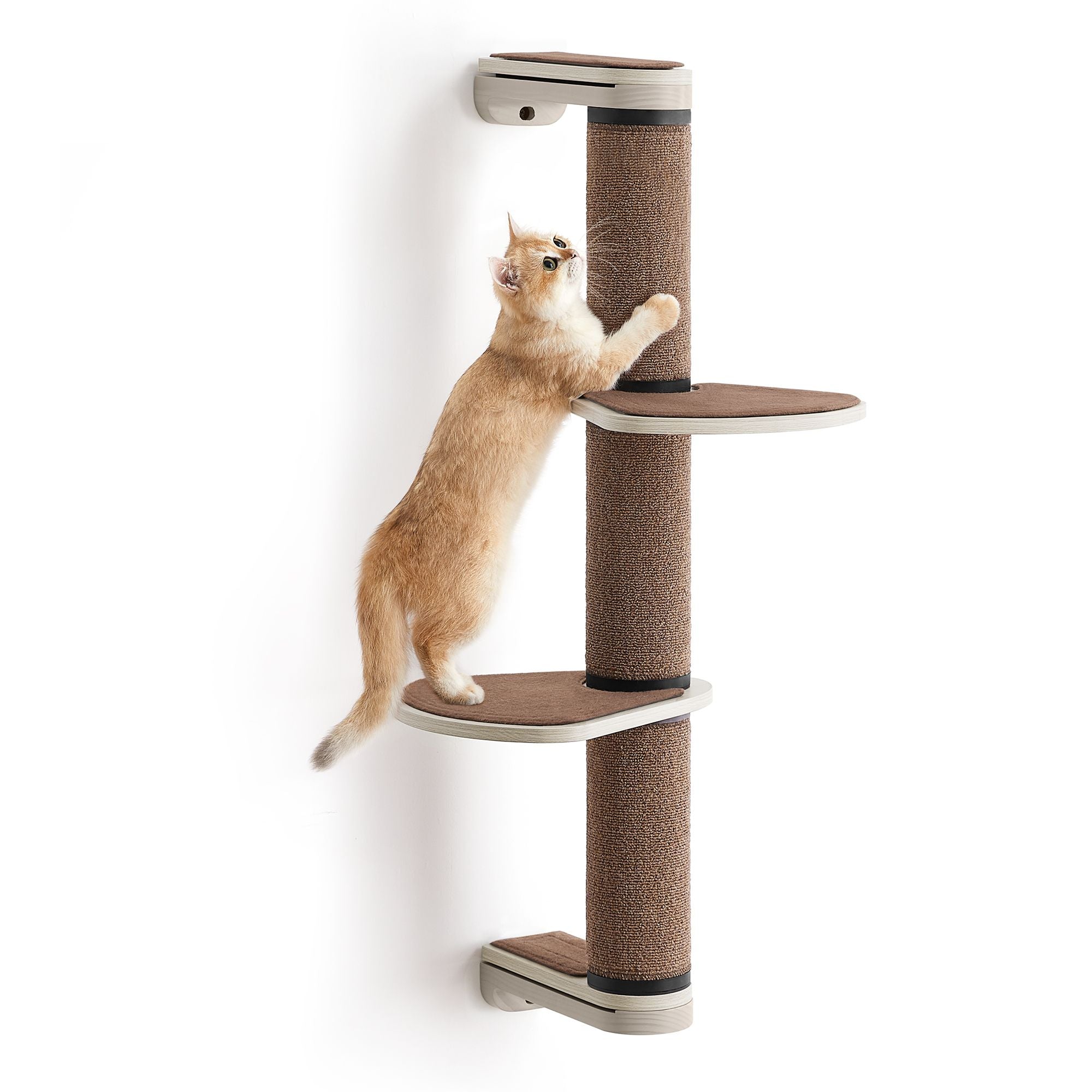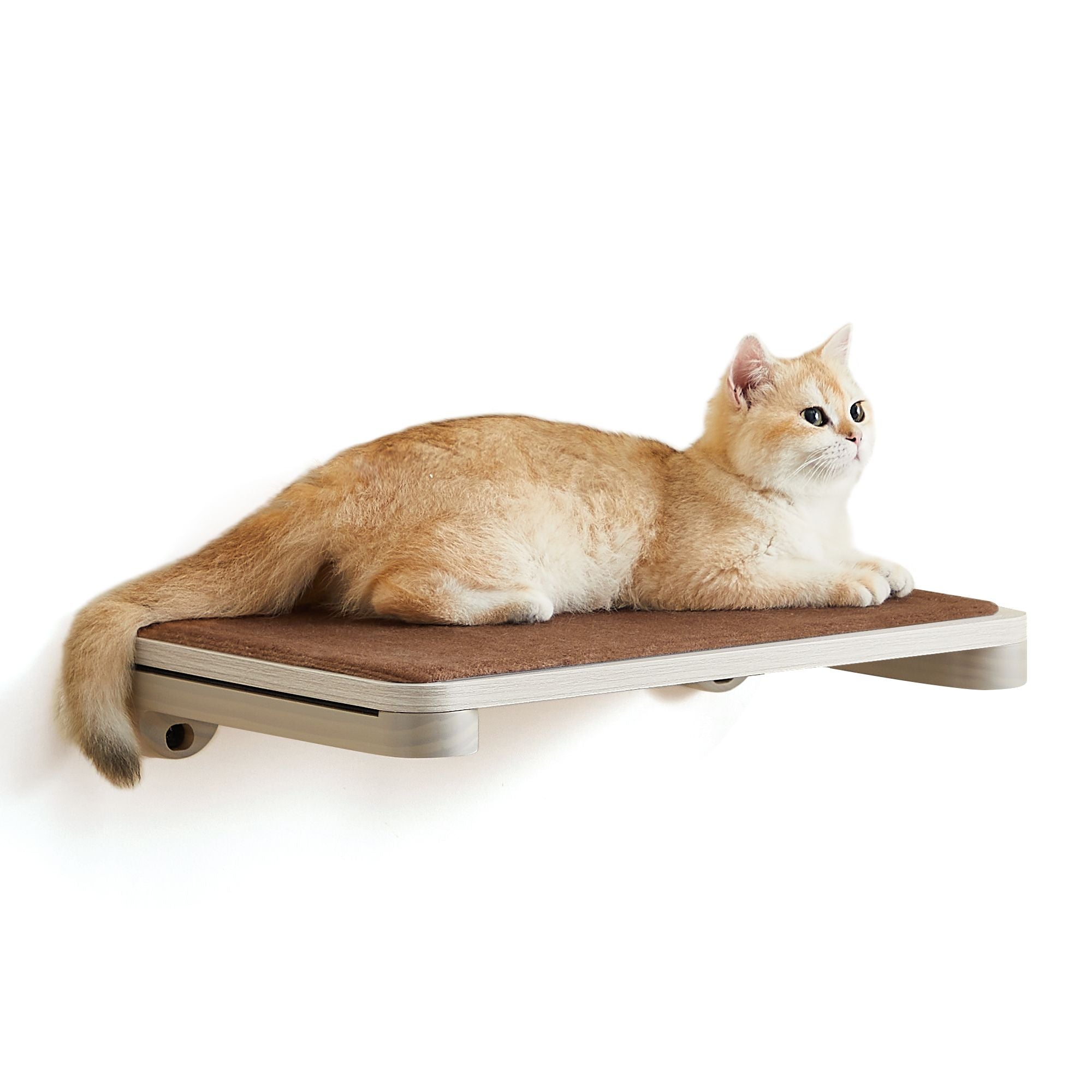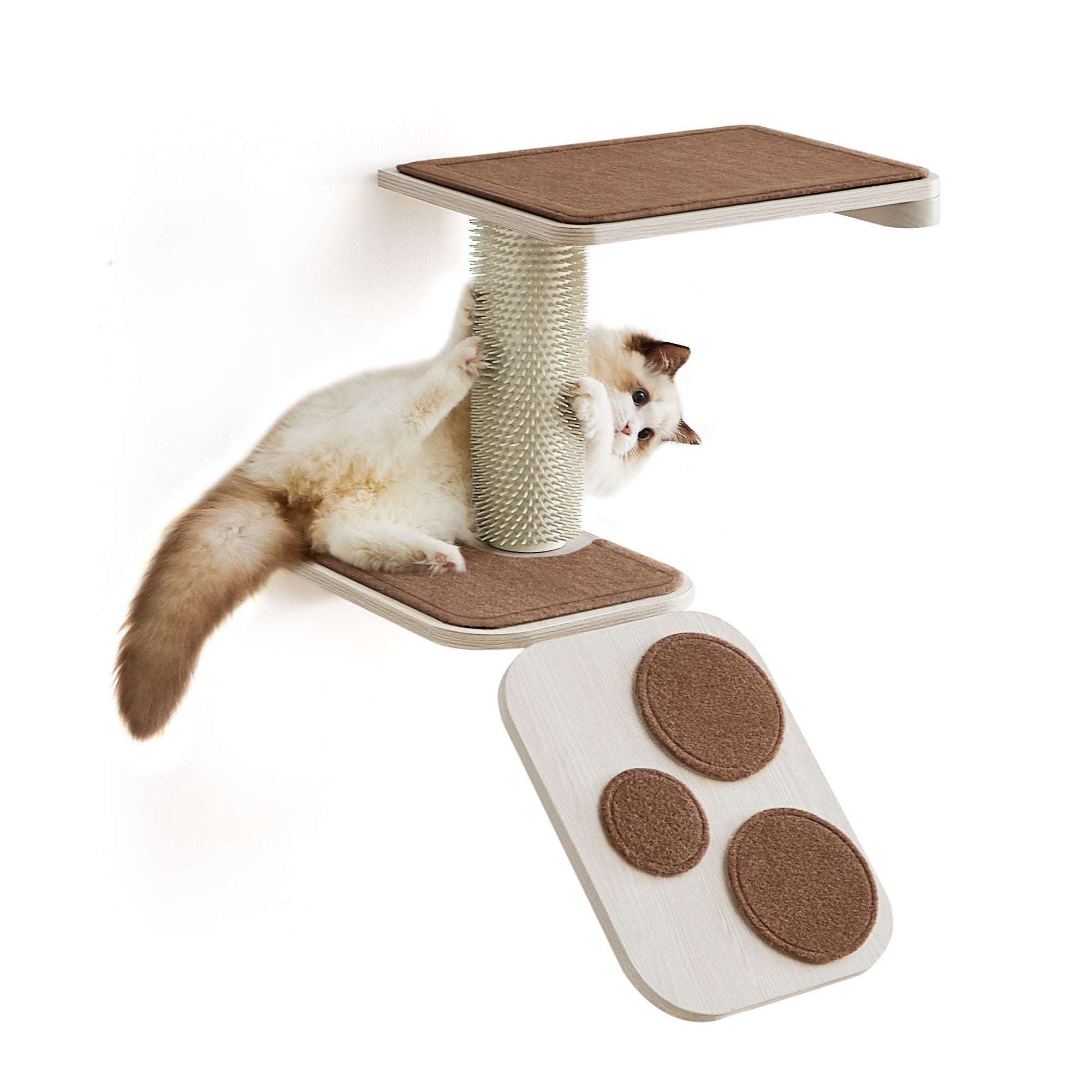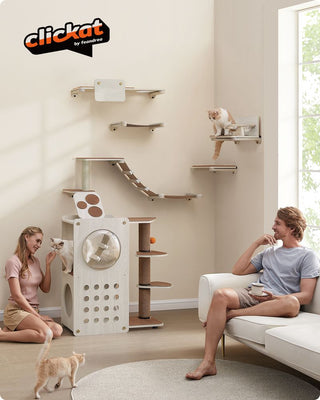Free shipping on all orders within the mainland US
Crafting the Perfect DIY Cat Tree for Large Cats
Every cat owner knows the importance of a stimulating and safe environment for their feline friends. This becomes even more crucial when you're the proud owner of a large cat breed. These majestic creatures, with their larger-than-average size, require more space and sturdy structures to lounge, play, and satisfy their natural instincts. One of the best ways to cater to these needs is by crafting a DIY cat tree. This approach is not just cost-effective, but it also allows you to design a unique space that mirrors your cat's preferences and personality.

Unveiling the Mystique of "Large Felidae"
"Large cats" typically refers to specific breeds that exhibit a more substantial physical presence compared to the average domestic cat. These aren't your regular tabbies but majestic creatures that command space and sturdy structures to accommodate their heft.
Breeds like the Maine Coon, Ragdoll, and Savannah fall under this category. These breeds are renowned for their size, often weighing anywhere between 13 to 20 pounds – a considerable heft compared to the average 9-10 pounds of a regular domestic cat. But it's not just their weight that sets them apart. These large breeds are also known for their length, with some reaching up to 40 inches when measured from the tip of their nose to the tip of their tail.

The Unparalleled Benefits of Custom-Built Cat Trees for Large Breeds
In the realm of pet care and enrichment, the concept of DIY holds a unique allure. This is particularly true when it comes to crafting cat trees for larger breeds. But why should one consider going the DIY route instead of opting for a ready-made solution? The reasons are manifold, and they extend beyond mere cost savings.


Foremost among the benefits of a DIY large cat tree is the unparalleled level of personalization it offers. Every feline is unique, with distinct needs, preferences, and physical capabilities. A Maine Coon might relish high perches, while a Ragdoll might prefer cozy, enclosed spaces. Age, too, plays a critical role, with older cats requiring more accessible and comfortable spaces, while younger ones might appreciate challenging climbing structures. A DIY approach empowers you to incorporate these individual preferences and needs into your design, creating a cat tree that your pet will truly love.
The DIY route often proves to be a more cost-effective alternative. Pre-made cat trees, especially those designed for larger breeds, can be prohibitively expensive. By sourcing your own materials and investing some time and effort, you can create a robust, large-scale structure without straining your wallet.
Gleaning Inspiration: Exploring Product Recommendations for Large Cat Trees
As you embark on your DIY journey to build a large cat tree, it can be incredibly helpful to draw inspiration from existing products in the market. These models, designed by experts in the field, offer valuable insights into the features and design elements that can cater to the unique needs of large cats. Of couse, you also have the option to procure a pre-assembled cat tree.

Feandrea 81.1" Large Multi-Level Cat Tree with 13 Scratching Posts Cream White
- 81.1" Tall, Endless Climbing Fun
- Robust Material, Safe Cat Condo
- Easy to Assemble
- Spare Pompom
- All-in-One Playground
- 13 Scratching Posts & 1 Scratching Ramp
- Easy to Clean
With 2 padded cat perches, 2 cozy caves, 1 fluffy basket, 2 pompoms, and 1 hammock, cats of different characters can all find their fave spot on this multi-level cat villa covered with plush all over—perfect for multi-cat households.
Buy Now
Feandrea Multilayer Large Cat Tree
- Materials to Purr About
- Variety for Your Needs
- Climbing Garden for Young and Old
- A Safe Shelter for Little Tigers
Furnished with 3 caves, 2 basket loungers, and 2 padded viewing platforms, this cat tree offers enough space for an entire cat family. Utilize colors that are resistant to showing dirt, ensuring the cat tree maintains a clean appearance over a longer period of time.
Buy Now
Yaheetech 69.5 inches Stable Cat Tree with Freely Rotating Tunnel
- Selected materials
- Barbie Dream Home of cat trees
- Perfect lookout for surveying
- Solid construction with guaranteed safety
- Worry-free assembly
It is constructed of eco-friendly E1-compliant particle board, natural sisal, and skin-friendly soft plush fabric covering, offering your cats a healthy and comfy touch in their tower. With this cat tree, your little fur buddies will be the happiest kittens in the world.
A Detailed Guide on Material Choices and DIY Steps for Building the Perfect Cat Tree
The journey towards creating a personalized playground for your feline friend begins with the crucial step of material selection. The materials you choose not only determine the durability and functionality of the cat tree but also its aesthetic appeal.
- Wood: It is a robust option that can support the weight of even the largest cats. It's relatively easy to work with, making it a favorite among DIY enthusiasts. However, it's worth noting that wood can be on the expensive side and quite heavy, factors that might influence your decision.
- PVC pipes: It is an alternative to wood. These provide an economical yet effective solution. They're lightweight and easy to manipulate, and when covered with fabric or rope, they transform into ideal scratching posts. However, their durability doesn't quite match up to that of wood.
- Carpeting: It is an excellent choice for covering platforms, providing a soft and comfortable surface for your cat. The flip side is that it can be a bit challenging to clean and may become a hiding place for allergens.
- Sisal rope: It is the go-to material for creating scratching posts. It's durable, safe for cats, and has a texture that cats love. However, it can fray over time and may require periodic replacement.

After choosing your materials, the next phase of your DIY cat tree project is the fabrication process. Here's a comprehensive guide to help you navigate through each step:
1. Plan Your Design: This step is all about creating a blueprint for your cat tree. It involves considering the needs of your cat and the space you have available in your home. For instance, if your cat loves climbing, you might want to include several high platforms in your design. If your cat enjoys hiding, incorporating a few enclosed spaces would be ideal. Once you've thought through these aspects, sketch out your design on paper, making sure to note the dimensions. This sketch will serve as your roadmap during the construction process.
2. Build the Base: The base is the foundation of your cat tree. It provides stability and prevents the structure from tipping over when your cat jumps or climbs on it. Therefore, it's crucial to build a strong, stable base. Depending on your design, this could be a simple square or rectangle, or it might have multiple levels. Make sure it's flat and sturdy enough to support the rest of the structure.
3. Add the Posts and Platforms: With the base ready, the next step is to attach the posts. These posts serve as the main support for the platforms and should be securely fastened to the base. Following this, add the platforms at various heights based on your design. Ensure that each platform is securely attached and can comfortably bear your cat's weight.
4. Cover with Carpet or Sisal Rope: Now it's time to make your cat tree comfortable and appealing for your cat. Cover the platforms with carpet to provide a soft, cozy surface for your cat to lounge on. Wrap the posts with sisal rope, creating an ideal scratching post for your cat. Use a strong, pet-safe adhesive to secure the carpet and sisal rope to the structure.
Always remember that safety is paramount. If you feel unsure about your building skills at any point during the construction process, don't hesitate to seek help or advice from a professional.

Summary
DIY cat tree provides a cost-effective, personalized haven for your large cat. The process, while requiring careful planning and creativity, bestows a sense of accomplishment as you craft a beloved, long-lasting play structure for your feline companion. So, why not embark on this rewarding DIY journey?
Clickat: Enjoy Every Meowment
MOST POPULAR
Trending Categories
Related Articles
Enjoy Our Inspiration?
subscribe to get more fresh ideas to your inbox.










